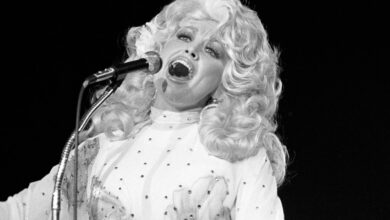The Doors’ “Light My Fire” Ignites a Psychedelic Revolution in 1967
When Light My Fire was released in 1967, it was more than just a song—it was an explosion. The Doors’ breakout hit captured the essence of the psychedelic era, blending rock, blues, and jazz into a mesmerizing, hypnotic soundscape that defined the late 1960s. As the band’s first No. 1 hit on the Billboard Hot 100, Light My Fire propelled The Doors to international fame, becoming one of the most recognizable and enduring songs in rock history. Its haunting melody, poetic lyrics, and extended instrumental passages set it apart from anything else on the radio at the time, making it an anthem of the counterculture movement.
The Doors formed in Los Angeles in 1965, led by the enigmatic Jim Morrison, whose magnetic presence and poetic sensibilities made him one of rock’s most iconic frontmen. Alongside Morrison, guitarist Robby Krieger, keyboardist Ray Manzarek, and drummer John Densmore crafted a unique sound that blended psychedelic rock with elements of jazz and blues. Unlike many of their contemporaries, The Doors had no bassist, relying instead on Manzarek’s innovative organ playing to provide both melody and rhythm. This unconventional setup gave their music a distinctively eerie and hypnotic quality that set them apart from the explosion of rock bands emerging in the mid-’60s.
The origins of Light My Fire can be traced back to Robby Krieger, who composed the song’s melody and much of its lyrics. Inspired by the elemental themes of earth, air, water, and fire, Krieger focused on creating a song that embodied passion and desire. Morrison, never one to shy away from poetic flourishes, contributed additional lyrics, transforming the song into something deeper and more mystical. The imagery of fire as both a literal and metaphorical force resonated with the band’s growing fascination with transcendence, altered consciousness, and sensuality.
Recorded in August 1966 and included on their self-titled debut album, Light My Fire was a showcase for The Doors’ improvisational prowess. The album version, running over seven minutes long, featured an extended instrumental break with Manzarek’s swirling organ solos and Krieger’s fluid guitar work, creating an almost trance-like effect. Producer Paul A. Rothchild encouraged the band to embrace their experimental instincts, allowing the song’s ethereal and hypnotic atmosphere to fully develop. Morrison’s smoldering vocal delivery, shifting between a hushed murmur and an impassioned wail, added to the song’s allure.
When Light My Fire was released as a single in April 1967, it was trimmed down to a more radio-friendly three-minute version, cutting much of the instrumental section. Despite this, it retained its intoxicating energy and quickly climbed the charts, reaching No. 1 on the Billboard Hot 100 by July. The song’s success helped push The Doors album to platinum status and solidified the band’s place in rock history. Audiences were captivated by its hypnotic organ riff, Morrison’s commanding presence, and the band’s ability to fuse poetry with raw, uninhibited rock music.
Beyond its commercial success, Light My Fire became a defining song of the era. It was a staple of the psychedelic movement, capturing the feeling of exploration and liberation that characterized the late 1960s. The song’s sensuality, both in its lyrics and Morrison’s delivery, made it controversial yet irresistible, with some radio stations initially hesitant to play it due to its implied drug and sexual references. However, its popularity was undeniable, and it became a touchstone for a generation seeking escape and transcendence through music.
For The Doors, Light My Fire was the catalyst that transformed them from a local club band into international rock stars. Following its success, they were booked on major television shows, including The Ed Sullivan Show, where they famously defied the show’s producers by refusing to alter the song’s lyrics. This rebellious attitude only added to Morrison’s mythos and further cemented The Doors as the voice of the counterculture.
The song’s impact extended beyond the band, influencing countless musicians and shaping the direction of rock music. Its improvisational approach inspired the jam band movement, while its seamless blending of rock, blues, and jazz elements encouraged artists to push the boundaries of genre. Many bands, from Led Zeppelin to Pink Floyd, incorporated similar extended instrumental sections in their music, owing much to The Doors’ pioneering style.
As one of The Doors’ most beloved tracks, Light My Fire has been covered by a variety of artists across genres. José Feliciano’s Latin-infused version became a hit in 1968, offering a softer, acoustic interpretation that reached No. 3 on the Billboard Hot 100. Artists like Shirley Bassey, Al Green, and even Will Young have recorded their own renditions, each adding a unique twist to the song’s timeless melody. However, none could match the raw intensity of The Doors’ original, which remains the definitive version.
At the time of Light My Fire’s release, Jim Morrison was already becoming a larger-than-life figure, embodying the rock star persona with his unpredictable stage antics and poetic mystique. However, his battles with substance abuse and authority would soon lead to the band’s struggles in the years that followed. By 1971, Morrison had left for Paris, where he tragically passed away at the age of 27. Despite his early death, his legacy endures, and Light My Fire remains one of the songs most closely associated with his legend.
Decades after its release, Light My Fire continues to be a staple of classic rock radio, frequently appearing on lists of the greatest songs of all time. It has been inducted into the Grammy Hall of Fame and remains one of the most streamed and celebrated songs of the 1960s. Its hypnotic energy and fearless experimentation ensure that it never feels dated, continuing to inspire musicians and listeners alike.
The song’s impact on music is undeniable. It redefined what a rock song could be, proving that hit singles didn’t have to be simple or conventional. It introduced mainstream audiences to the idea of extended instrumental improvisation, paving the way for progressive rock and jam bands. Most importantly, it embodied the spirit of an era—bold, adventurous, and unapologetically passionate.
Even more than 50 years after its release, Light My Fire remains a burning symbol of The Doors’ genius. It’s a song that transcends time, carrying with it the mystery, excitement, and danger that made The Doors one of the most influential bands in rock history. Whether blasting through speakers in 1967 or streaming on a playlist today, it continues to ignite imaginations and set the world ablaze.



